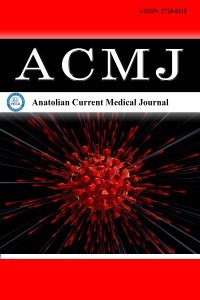1.
Liu Z, Doan Q, Blumenthal P, Dubois RW. A systematic reviewevaluating health-related quality of life, work impairment, andhealth-care costs and utilization in abnormal uterine bleeding.Value Health 2007; 10: 183-94.
2.
Fraser IS, Critchley HOD, Broder M, Munro MG. The FIGOrecommendations on terminologies and definitions for normaland abnormal uterine bleeding. Semin Reprod Med 2011; 29:383-90.
3.
Heavy menstrual bleeding: assessment and management.National Institute for Health and Care Excellence (NICE),Clinical Guidelines Vol. 29, 2018, London.
4.
Kaunitz AM, Bissonnette F, Monteiro I, Lukkari-Lax E, DeSanctisY, Jensen J. Levonorgestrel-Releasing Intrauterine System forheavy menstrual bleeding improves hemoglobin and ferritinlevels. Contraception 2012; 86: 452-457.
5.
Munro MG, Critchley HOD, Broder MS, Fraser IS, FIGOWorking Group on Menstrual Disorders. FIGO classificationsystem (PALM-COEIN) for causes of abnormal uterine bleedingin nongravid women of reproductive age. Int J Gynaecol Obstet2011; 113: 3-13.
6.
McGahuey CA, Gelenberg AJ, Laukes CA, et al. The Arizonasexual experience scale (ASEX): reliability and validity. J SexMarital Ther 2000; 26: 25-40
7.
Soykan A. The reliability and validity of Arizona sexualexperiences scale in Turkish ESRD patients undergoinghemodialysis. Int J Impot Res 2004; 16: 531-4.
8.
Bushnell DM, Martin ML, Moore KA, Richter HE, Rubin A,Patrick DL. Menorrhagia Impact Questionnaire: assessing theinfluence of heavy menstrual bleeding on quality of life. CurrMed Res Opin 2010; 26: 2745-55.
9.
Brehaut JC, O’Connor AM, Wood TJ, et al. Validation of adecision regret scale. Med Decis Making 2003; 23: 281-92.
10.
Telatar T G, Satır Özel C, Turgut A, Kınlı O. Turkish versionmethodological validation study of the Decision Regret Scale.Ethiopian J Health Development 2021; 35: 362-6.
11.
Luukkainen T, Allonen H, Haukkamaa M, Lähteenmäki P, NilssonCG, Toivonen J. Five years’ experience with Levonorgestrel-Releasing IUDs. Contraception 1986; 33: 139-48.
12.
Xiao BL, Zhou LY, Zhang XL, Jia MC, Luukkainen T, AllonenH. Pharmacokinetic and pharmacodynamic studies oflevonorgestrel-releasing intrauterine device. Contraception1990; 41: 353-62.
13.
Bahamondes L, Valeria Bahamondes M, Shulman LP. Non-contraceptive benefits of hormonal and intrauterine reversiblecontraceptive methods. Hum Reprod Update 2015; 21: 640-51.
14.
Silverberg SG, Haukkamaa M, Arko H, Nilsson CG,Luukkainen T. Endometrial morphology during long-term useof levonorgestrel-releasing intrauterine devices. Int J GynecolPatholson 1986; 5: 235-41.
15.
Koh SCL, Singh K. The effect of levonorgestrel-releasingıntrauterine system use on menstrual blood loss and thehemostatic, fibrinolytic/inhibitor systems in women withmenorrhagia. J Thromb Haemost 2007; 5: 133-8.
16.
Fedele L, Bianchi S, Raffaelli R, Portuese A, Dorta M. Treatmentof adenomyosis-associated menorrhagia with a levonorgestrel-releasing intrauterine device. Fertil Steril 1997; 68: 426-9.
17.
Endrikat J, Shapiro H, Lukkari-Lax E, Kunz M, Schmidt W,Fortier M. A Canadian, multicentre study comparing the efficacyof a levonorgestrel-releasing intrauterine system to an oralcontraceptive in women with idiopathic menorrhagia. J ObstetGynaecol Can 2009; 31: 340-7.
18.
Bofill Rodriguez M, Dias S, Jordan V, et al. Interventions forheavy menstrual bleeding; overview of Cochrane reviews andnetwork meta-analysis. Cochrane Database Syst Rev 2022; 5:CD013180.
19.
Ozdegirmenci O, Kayikcioglu F, Akgul MA, et al. Comparisonof levonorgestrel intrauterine system versus hysterectomy onefficacy and quality of life in patients with adenomyosis. FertilSteril 2011; 95: 497-502.
20.
Romero SA, Young K, Hickey M, Su HI. Levonorgestrelintrauterine system for endometrial protection in women withbreast cancer on adjuvant tamoxifen. Cochrane Database SystRev 2020; 12: CD007245.
21.
Wang Y, Yang M, Huang X, Li X, Lin E, Feng Y. Prevention ofbenign endometrial polyp recurrence using a Levonorgestrel-releasing Intrauterine System in premenopausal patients: aretrospective cohort study. J Minim Invasive Gynecol 2020; 27:1281-6.
22.
Kuzel D, Mara M, Zizka Z, Koliba P, Dundr P, Fanta M. Malignantendometrial polyp in woman with the levonorgestrel intrauterinesystem - a case report. Gynecol Endocrinol 2019; 35: 112-4.
23.
Chowdary P, Maher P, Ma T, Newman M, Ellett L, Readman E.The role of the Mirena intrauterine device in the managementof endometrial polyps: a pilot study. J Minim Invasive Gynecol2019; 26: 1297-302.
24.
Bulun SE. Uterine fibroids. N Engl J Med 2013; 369: 1344-55.
25.
American College of Obstetricians and Gynecologists committeeon Prcatice Bulletins-Gynecology, Management of symptomaticuterine leiomyomas. Obstet Gynecol 2021; 137: e100-e15.
26.
Senol T, Kahramanoglu I, Dogan Y, Baktiroglu M, Karateke A,Suer N. Levonorgestrel-releasing intrauterine device use as analternative to surgical therapy for uterine leiomyoma. Clin ExpObstet Gynecol 2015; 42: 224-7.
27.
Chen S, Liu J, Peng S, Zheng Y. LNG-IUS vs. medical treatmentsfor women with heavy menstrual bleeding: a systematic reviewand meta-analysis. Front Med (Lausanne) 2022; 9: 948709.
28.
Turan G, Bahat PY, Cetin BA, Peker N. The effect of alevonorgestrel-releasing intrauterine device on female sexualfunction. J Obstet Gynaecol (Lahore) 2021; 41: 269-74.
29.
Halmesmäki K, Hurskainen R, Teperi J, et al. The effect ofhysterectomy or levonorgestrel-releasing intrauterine system onsexual functioning among women with menorrhagia: a 5-yearrandomised controlled trial. BJOG 2007; 114: 563-8.
30.
Gemzell-Danielsson K, Apter D, Hauck B, et al. The effect of age,parity and body mass index on the efficacy, safety, placement anduser satisfaction associated with two low-dose LevonorgestrelIntrauterine Contraceptive Systems: subgroup analyses of datafrom a Phase III trial. PLoS One 2015; 10: e0135309.
31.
Hurskainen R, Teperi J, Rissanen P, et al.Clinical outcomes andcosts with the levonorgestrel-releasing intrauterine system orhysterectomy for treatment of menorrhagia: randomized trial5-year follow-up. JAMA 2004; 291: 1456-63.
32.
Blumenthal P D, Dawson L, Hurskainen R. Cost-effectivenessand quality of life associated with heavy menstrual bleedingamong women using the levonorgestrel-releasing intrauterinesystem. Int J Gynaecol Obstet 2011; 112: 171-8.
33.
Heliövaara-Peippo S, Hurskainen R, Teperi J et al. Quality oflife and costs of levonorgestrel-releasing intrauterine systemor hysterectomy in the treatment of menorrhagia: a 10-yearrandomized controlled trial. Am J Obstet Gynecol 2013; 209:535.e1-535.e14.

